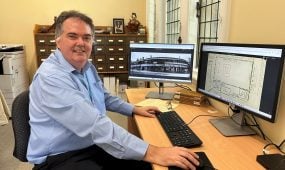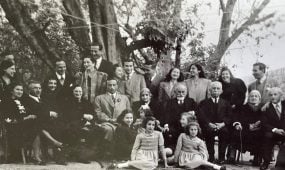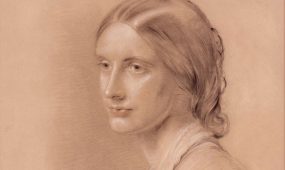Beyond the battlefield: Preserving the past between the Diocese and the Australian Defence Force
People & History
“On Anzac Day, we remember those that paid the ultimate sacrifice. To ensure that their memory — and all those we memorialise within our Diocese — is not forgotten or lost, we should ensure that the record of that memory (not just the physical object) is created, captured and preserved,” says Diocesan Archivist Michael Rogers
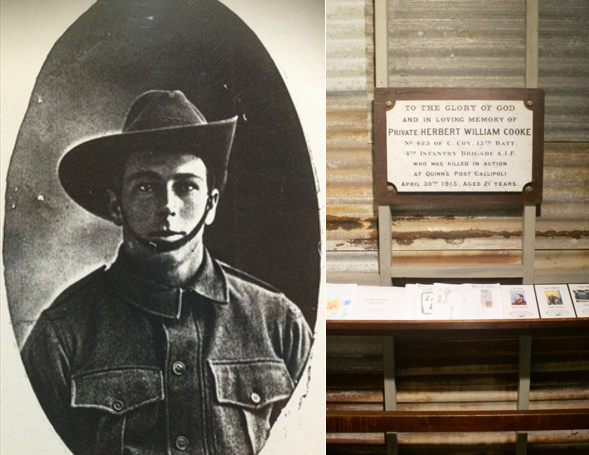
As more treasures are being unearthed as part of the Diocesan Digitisation Plan, recent discoveries have highlighted the importance of properly documenting the changing nature of the buildings and structures within the Diocese, lest this knowledge be forgotten or lost.
In my last feature piece for anglican focus, I concluded that recently digitised records had uncovered many references to memorials for fallen soldiers. In noting this, I was reminded about the many records and stories that are held within the Archives that link our Diocese to the Australian Defence Force and Anzac Day.
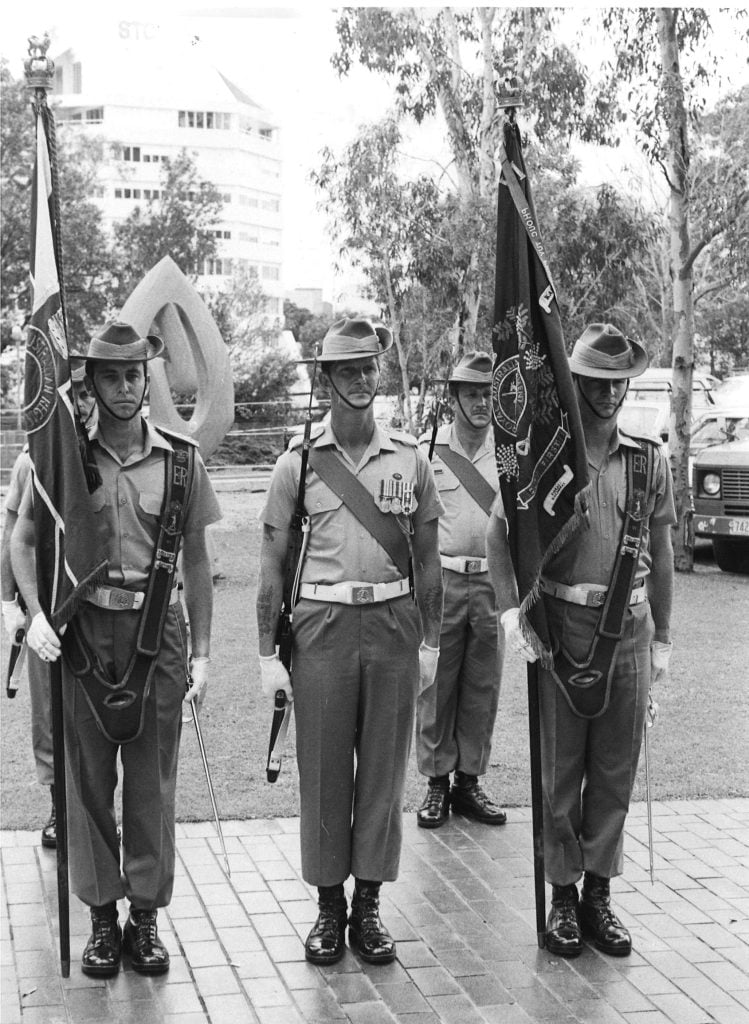
Defence Force Colour Party about to enter St John’s Cathedral, 1987
Many readers will be reminded of other articles that Archives staff have written and promoted on this subject, including the role that The Rev’d Canon David Garland had on the establishment of Anzac Day as an important way of commemorating Australian and New Zealand forces.
What is often not appreciated is that while we have national days of commemoration memorials (including memorials within our Diocese) had they not been properly authorised and documented, the memory of our fallen soldiers could have been forgotten or even lost entirely.
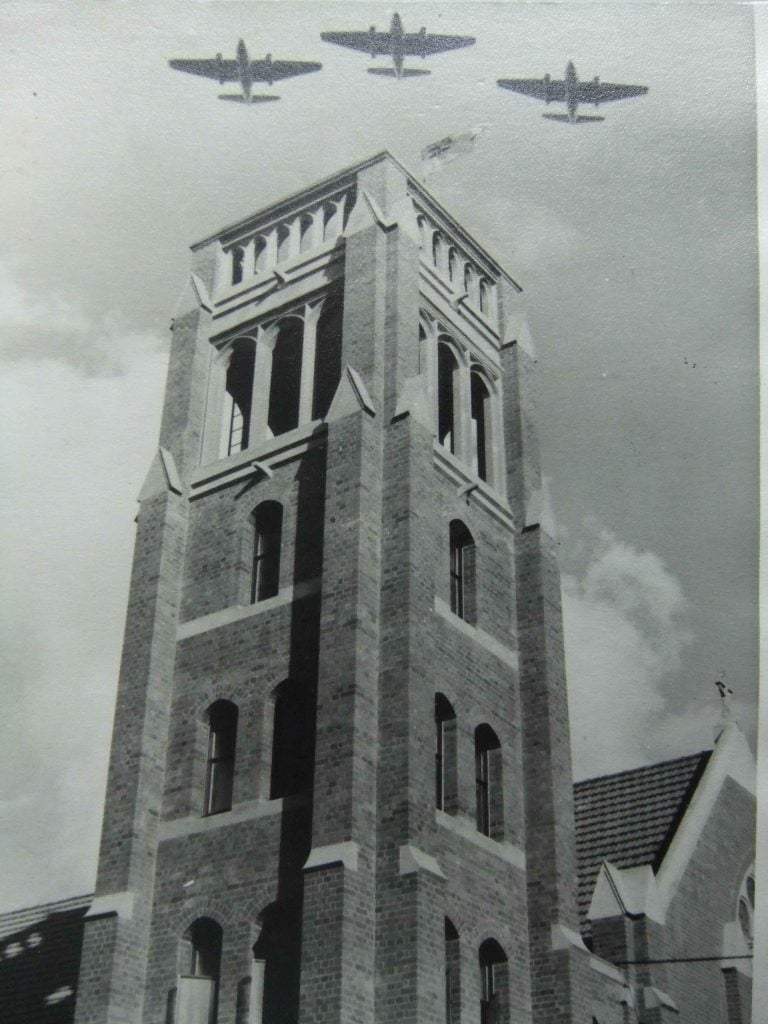
Image of St Augustine’s Hamilton taken at its dedication in 1961
There are many churches within our Diocese that have established links to the Australian Defence Force. These include St Augustine’s at Hamilton, St Mary’s at Kangaroo Point, St Barnabas’ in Red Hill and St John’s Cathedral, among others.
In St. Mary’s at Kangaroo Point, one memorial that may be overlooked is the case and stand containing the Book of Remembrance. The book contains the names of ‘of all those who died in the Great Wars, 1914–1918 and 1939–1945 to whom we who worship here are bound by ties of kinship, friendship and love, may be always remembered by name before God’. The case and stand, dedicated on 1 November 1953, is to “the Glory of God and in memory of the Australian Army Nursing Service”. The book also contains those who served but did not die as a result of conflict – including Dr Lilian Cooper.
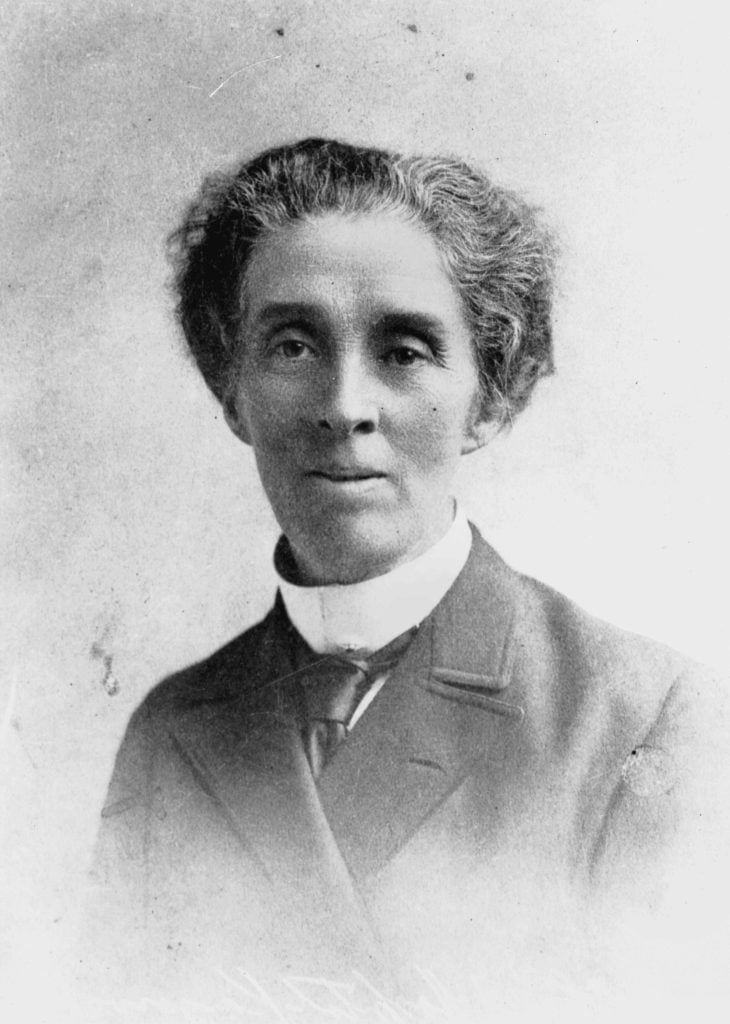
Image of Dr Lilian Cooper sourced from John Oxley Library
The Australian Defence Force regularly holds services within the Cathedral, and there is, of course, the wonderful stained-glass window dedicated to Australian and American service personnel who served during World War II.
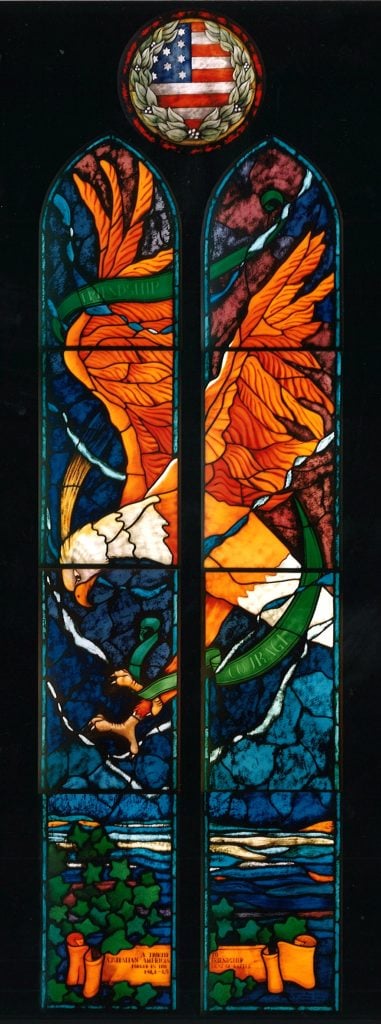
One of the Australian-American War Memorial windows – American window
During World War II, Brisbane became a supply base for Allied troops and the US Navy from 1942 to 1945. If an American soldier and a local Anglican woman wanted to marry, they needed the permission of the soldier’s commanding officer (usually Colonel level) and the permission of the local Archbishop.
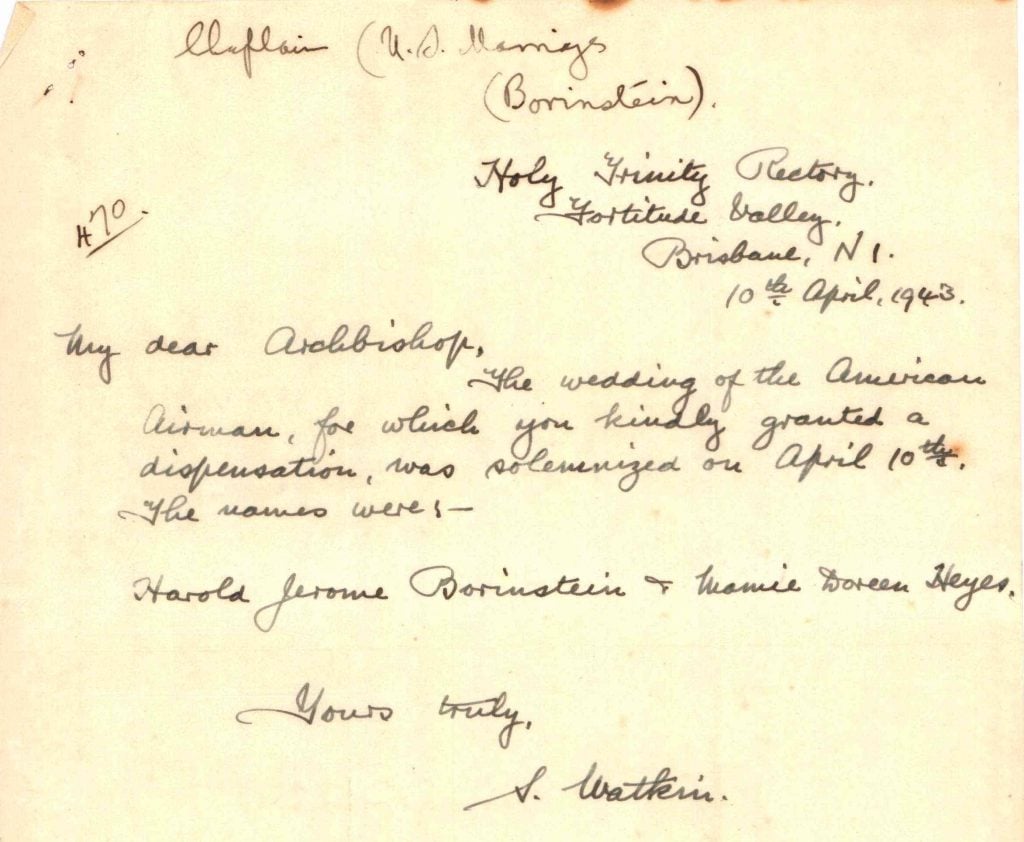
Extract from Archbishop William Wand papers regarding the marriage between an American airman and an Australian woman, 10 April 1943
There are several files within the records of Archbishop William Wand documenting where love did find away — as long as they went through the right channels. It remains for historians to research the legacy of these unions.
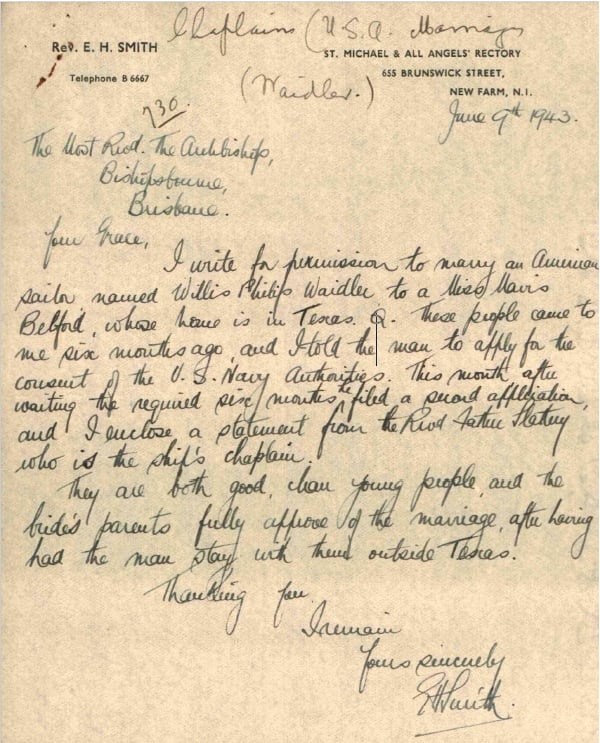
Extract from Archbishop William Wand papers regarding the marriage between an American sailor and an Australian woman, 9 June 1943
Stained-glass windows are a common memorial to departed family and soldiers, as are plaques or church furnishings. Honour boards would often document those that were currently serving — and later Honour boards and statues / war memorials would document those that had died — either during conflict or after as a result of their wounds (which could be either physical or mental).
Any memorial within our Diocese areas used for religious, educational or charitable purposes needed to get permission from the Archbishop — known as a Faculty. This process was established as policy by Bishop William Webber, although there may have been a loose direction concerning this before Synod asked for written clarification. The permission of the Archbishop is still the case today, although there is now a special committee that advises the Archbishop on buildings and furnishings.
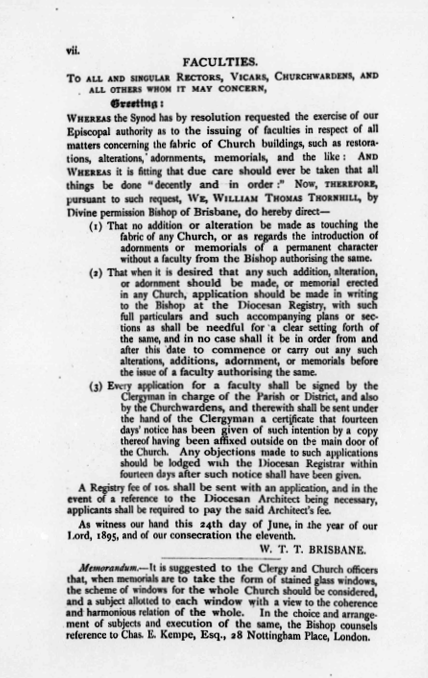
Extract from Diocesan Yearbook 1894-95 regarding Faculties
During World War I, Archbishop St Clair Donaldson reminded the Diocese that, “In all cases of alteration in the fabric or fixtures of a Church, a faculty is required. The procedure is that a notice must be placed for a fortnight on the door of the Church, or in some other prominent place, announcing the proposed change, in order that objectors, if any, may be heard. At the end of a fortnight application may be made to the Archbishop, with a certificate that the notice has been duly posted; and the work must not be begun until the faculty has been received by the parochial authorities.”
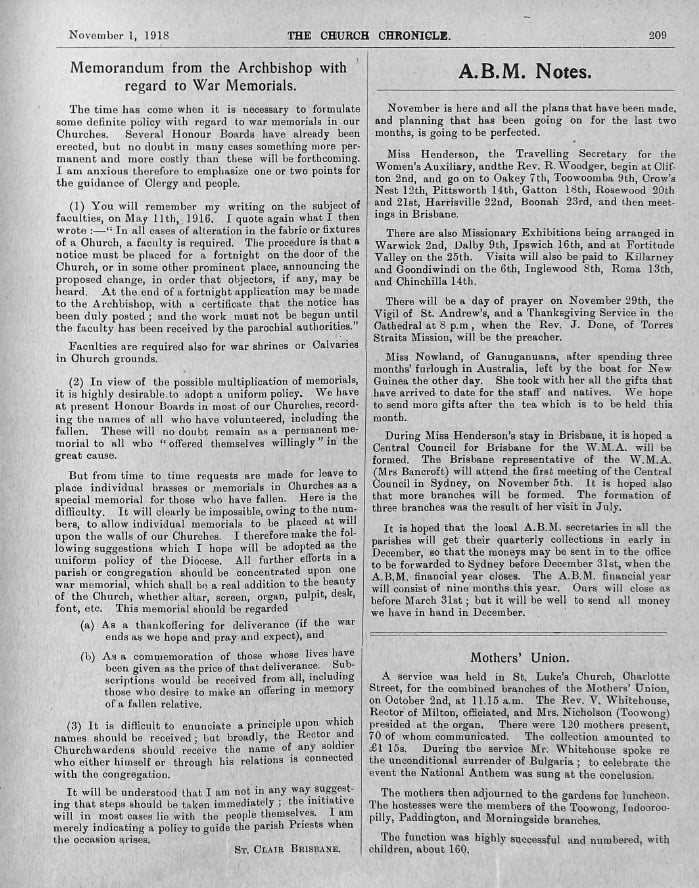
The Church Chronicle, November 1918 Memorandum from Archbishop Donaldson regarding War Memorials
Donaldson followed up on this point in a later article for the Church Chronicle, in which he was determined to establish a uniform policy for memorials to the fallen, and of having one singular memorial for each church. It was perhaps this desire for a single Diocesan memorial that was the driving force for the establishment of the St Martin’s War Memorial Hospital (now St Martin’s House).
There are several examples in the recently digitised Diocesan Registry Correspondence series (1890 to 1990) where loved-ones asked that a memorial be placed in their local church, and the parish priest or warden would write to the Registrar asking for permission. These would usually include a sketch or the text of the memorial. One early example is the memorial for Private Herbert William Cooke who was killed at Gallipoli on 30 April 1915. A memorial plaque was installed in St George’s Church at Eumundi.
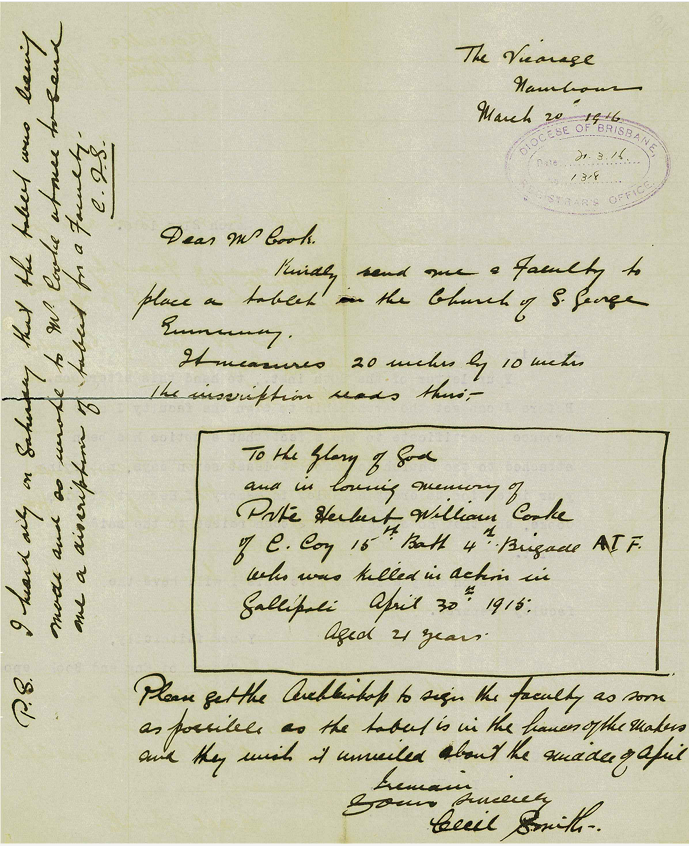
Extract from Diocesan Registry Correspondence Letters 1318 of 1916 regarding Private Cooke
While I was initially unable to locate where the plaque was, I was able to confirm that it was held in the collection of the Eumundi Museum, which is located in the former Methodist Church on Memorial Drive.
According to the Museum’s Director Joe Hextall, the plaque is not currently on display, but will hopefully be installed in the new Military Service Gallery, due to be completed sometime in 2025. Mr Hextall noted that a memorial tree dedicated to Private Cooke is located very near to the museum.
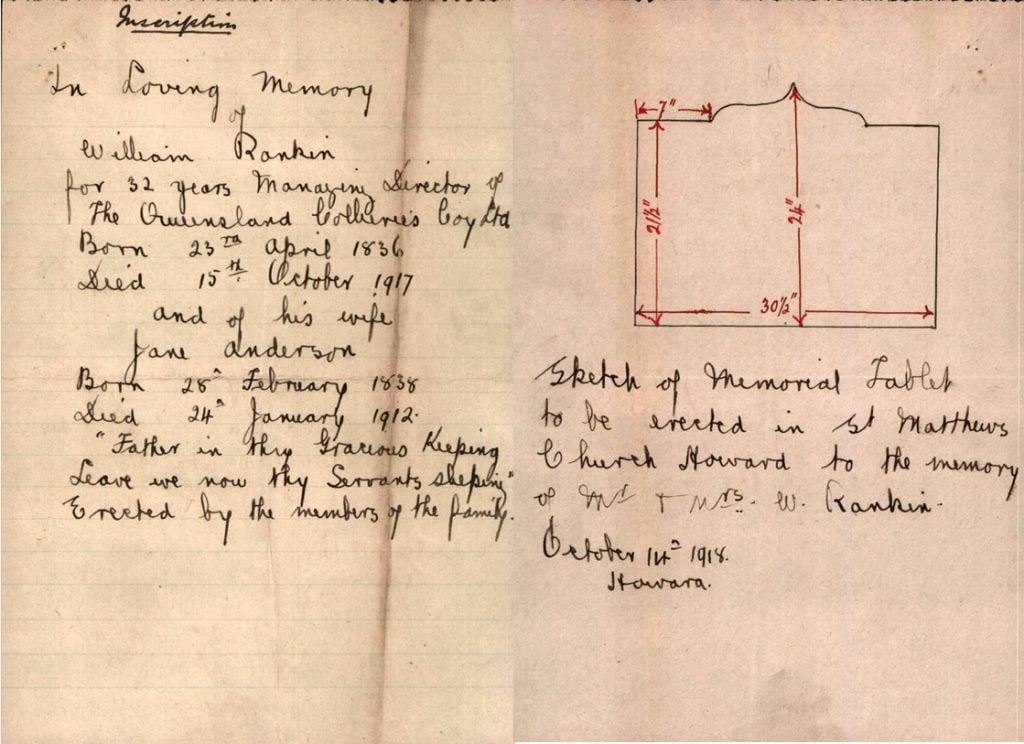
Extract from Diocesan Registry Correspondence regarding Memorial Tablet at St Matthew’s Church, Howard 14 October 1918
There are many other faculties and memorials that I noted in the digitised records for churches at Kilcoy, Sandgate, Nambour, Jackson, Southport, Charleville and Augathella. Some were for honour boards or windows or a plaque like Private Cooke’s.
On Anzac Day, we remember those that paid the ultimate sacrifice. To ensure that their memory — and all those we memorialise within our Diocese — is not forgotten or lost, we should ensure that the record of that memory (not just the physical object) is created, captured and preserved.


